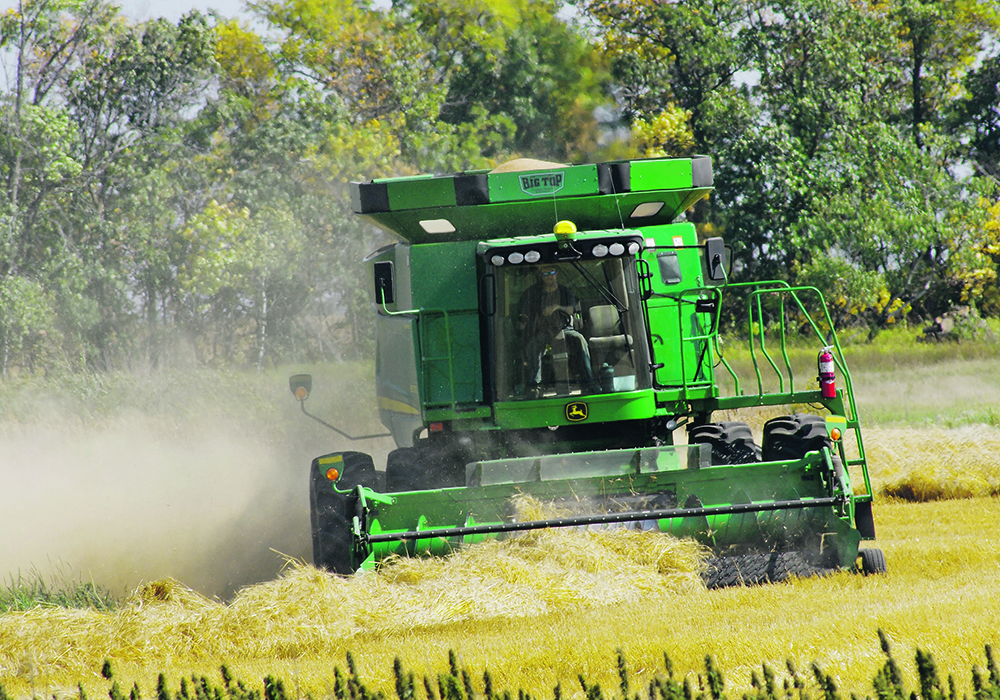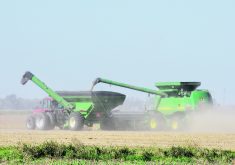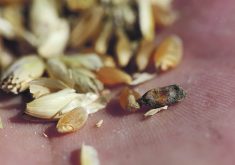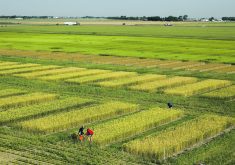Online tools are available to help producers get a better handle on what it costs them to bring in their crops in the fall
Glacier FarmMedia – “You have to spend money to make money,” says the old adage, but failing to track harvest costs may tip farmers to the wrong side of that transaction.
Darren Bond, farm management specialist with Manitoba Agriculture, has some provincially backed tools that can help, he said during an Aug. 21 webinar hosted by the province.
The department has a number of online tools and calculators available, including the straw cost calculator, equipment custom rental rate guide and the grain bin cost calculator, among others.
Read Also

Short rapeseed crop may put China in a bind
Industry thinks China’s rapeseed crop is way smaller than the official government estimate. The country’s canola imports will also be down, so there will be a lot of unmet demand.
Most of those tools are accessible through Microsoft Excel and web browsers, Bond said.
“I like the online method because we can get it on our phones; we can get it on our tablets. You have to have internet connection to do it, but it does make it pretty good.”
The straw cost calculator factors in nutrient removal, baling costs and other variables to estimate the value of straw per bale, including producer markup. Producers can calculate any size of bales, including round or large square. Bale weight is also incorporated.
“Producers like to transact at per bale, but it’s very important to know the weight that’s in there,” Bond said.
The calculator also allows producers to specify the type of straw, whether cereal, pea, canola, soybean or corn stover.
“We have the different straws, and each of them have the different nutrient mix that are, on average, found within these bales,” Bond said.
He emphasized the importance of adjusting the calculator’s values to reflect current fertilizer prices and individual circumstances, such as the type of straw being harvested.
Potassium usually presents the largest value for nutrients in the calculator, since there’s so much of it in straw, Bond said, but levels vary depending on weather conditions.
“If we get a rain, we can see some of that potassium wash out of the straw and go back into the soil.”
Soil type will also affect values. The capacity to hold potassium will be different in sandy soil compared to heavy clay.
The straw cost calculator will be updated when the province does its fall fertilizer survey.
The equipment custom rental rate guide is designed to help producers determine the cost of operating machinery like combines. By inputting specific details about fuel use, field efficiency and equipment age, they can obtain cost estimates.
It’s proven to be popular, Bond said.
“A lot of the conversations I get, especially this time of year, are … what does it cost to operate a combine? And it’s really hard to say, because everyone’s situation is different. What type of land you’re on, how much you’re pushing through the combine, all those things.”
Producers need to keep labour costs top of mind when using the calculator, since that is a huge component of total cost, Bond said.
“We say that labour for a combine driver is about $30 an hour. I think that this could be low in some places, high in other places, depending on your labour.”
He also urged producers to monitor repair and maintenance costs, particularly for older equipment, to ensure realistic budgeting.
“If you have a combine that has some age to it, repair and maintenance costs are going to be higher … so a lot of the stuff here is just to get you thinking and adjusting for your own situation.”
The grain bin cost calculator allows producers to calculate the cost per bushel of storage, accounting for factors like depreciation, insurance and taxes.
“There’s so many costs in building a grain bin that sometimes it’s better to rent than it is to build, and sometimes it’s not. So, this calculator helps you kind of go through that decision process,” Bond said.
















